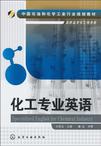化工专业英语
出版时间:2010-9 出版社:化学工业出版社 作者:刘庆文 主编 页数:144
前言
2006年11月教育部颁布了《关于全面提高高等职业教育教学质量的若干意见》(教高[2006]16号)文件,文件中明确了课程建设与改革是提高教学质量的核心,也是教学改革的重点和难点。文件要求各高等职业院校应积极与行业企业合作开发课程,根据技术领域和职业岗位(群)的任职要求,参照相关的职业资格标准,改革课程体系和教学内容;要建立突出职业能力培养的课程标准,规范课程教学的基本要求,提高课程教学质量;要改革教学方法和手段,融“教、学、做”为一体,强化学生能力的培养;要加强教材建设,与行业企业共同开发紧密结合生产实际的实训教材,并确保优质教材进课堂。 自文件颁布以来,在我国掀起了新的一轮高职高专教育教学改革热潮,以工作过程系统化重构高职高专课程体系,以项目化课程教学法改革传统学科传授教学法,取得了丰硕的成果。学生学习的兴趣、学习动力、自觉性、主动性、自信心、主体性和专业能力、自学能力、创新能力、团队合作能力、与人交流能力、计划策划能力、信息获取与加工能力等都得到明显提高,学生对复杂专业知识的把握情况也显著改善。项目化课程教学改革完全符合教育部的十六号文件精神。项目化课程教学改革遵循的八大原则更是体现了当今先进的高等职业教育观念。这八大原则是:①课程教学应进行整体教学设计;②课程内容是职业活动导向、工作过程导向,而不是学科知识的逻辑推演导向;③课程教学突出能力目标,而不仅仅是突出知识目标;④课程内容的载体主要是项目和任务,而不是语言、文字、图形、公式;⑤能力的训l练过程必须精心设计,反复训I练,而不是在讲完系统的知识之后,举几个知识的应用例子;⑥学生是课程教学过程中的主体;⑦课程的内容和教学过程应当“做、学、教”一体化,“实践、知识、理论”一体化;⑧注意在课程教学中渗透八大职业核心能力(外语应用能力、与人合作能力、与人交流能力、信息处理能力、数字应用能力、解决问题能力、自我学习和创新革新能力)的培养。 全国化工高等职业教育教学指导委员会(简称全国化工高职教指委)化工技术类专业委员会于2002年组织全国石油与化工各职业院校教师编写了第一套高职高专化工技术类专业规划教材,解决了当时高职院校化工技术类专业无教材的困难。然而,随着科学技术的进步,产业结构的调整,劳动效率的提高,信息技术的应用,劳动密集型生产已向资本密集型和技术密集型转变。特别是近年来的项目化课程教学改革的开展,原来的教材已不适应高等职业教育教学改革的需要。为此,全国化工高职教指委化工技术类专业委员会于2008年9月在常州工程职业技术学院启动了第二轮规划教材编写工作。
内容概要
本教材是为了提高化工技术类专业学生化工英语信息获取能力和信息产出能力,培养与职业能力结构要求相一致的高素质技能型人才而编写的。 本教材涉及化工产品生产、健康、安全、环境和质量等方面的内容。材料来源于英文原版书籍、杂志和英文化工方面的相关网站。由五个模块20个单元组成,每个单元由课文、难点注释、词汇表、课后练习和阅读材料组成。课文主要内容为:化工生产模块、职业健康和卫生模块、化工安全模块、环境保护模块和质量模块。书后附有总词汇表、化学化工常用构词、常见有机基团和常用化工产品英文缩写。 本教材突出实用、够用和好用特点,语言精练、图文并茂、操作性强、覆盖面广、难度适中,可作为高职高专化工技术类专业英语教材,也可作为从事化工产品生产工作人员的参考书。
书籍目录
Module One Chemical Production Unit One Production of Sodium Carbonate Unit Two Production of Polyethylene Unit Three Refining Petroleum Unit Four Fine Chemicals Unit Five Crystallization Unit Six Liquid-Liquid Extraction Unit Seven Analytical ChemistryModule Two Vocational Health and Sanitation Unit Eight Dangerous Factors of Chemical Industry Unit Nine Occupational Hazards and Protectio Unit Ten Individual ProtectionModule Three Chemical Industry Safety Unit Eleven Hazards of Dangerous Chemicals Unit Twelve Electric Accidents Unit Thirteen Chemical Process Safety InformationModule Four Environmental Protection Unit Fourteen Reduction of Exhaust Emission Unit Fifteen Reuse of Waste Unit Sixteen Recycle of Chemical Waste Unit Seventeen Cleaner ProductionModule Five Quality Unit Eigthteen Quality Assurance Unit Nineteen Quality Management Systems Unit Twenty Good Manufacturing PracticeAppendixes Ⅰ Vocabulary (词汇表) Ⅱ Common Prefixes & Suffixes of Chemistry or Chemical Words (化学化工常用构词) Ⅲ Common Groups of Organic Compounds (常见有机基团) Ⅳ Common.English Abbreviations of Chemical Products (常用化工产品英文缩写)References
章节摘录
While similar in its effects to the BLEVE discussed above, unconfined vapor cloudexplosions (UVCES) are another combustion process creating major emergency problems, butonly recently recognized as a threat of total devastation to process plants and surroundings.Chemicals as diverse as hydrogen, ethylene, butane, LPG, cyclohexane, ethylene oxide, ethylchloride, isopropyl alcohol, acrolein, and vinyl chloride, as well as crude oil, have caused seriousUVCEs.Uncontrolled ReleaseWhen a container or containment system fails, the resulting spill or release may have effectswhich may be dramatic or undetected. Chemical materials have a wide range of properties,producing effects of diverse nature. It is difficult to separate chronic from acute emergenciesin this context, since at some point, the chronic low level release may reach a point orconcentration that at least for some persons at high risk, is very acute.2Time-Bomb of Toxic or Explosive Materials from Improper DisposalHazardous-waste management is not a new problem, but its effects, while still largelyunappreciated, are rapidly becoming acute emergencies.3 Pollutants previously discharged intowaterways and atmosphere often accumulate, even when diluted, and become part of thebiological chain. Hazardous wastes may contain toxic chemicals, pesticides, acids, caustics,infectious, radioactive, carcinogenic, flammable, or explosive materials.BiohazardsBiological hazards, also known as biohazards, refer to biological substances that pose a threat tothe health of living organisms, primarily that of humans. This can include medical waste orsamples of a microorganism, virus or toxin (from a biological source) that can impact humanhealth. It can also include substances harmful to animals. Biological hazards are not alwaysvisible, but they must never be overlooked.
图书封面
评论、评分、阅读与下载
用户评论 (总计2条)
- 老婆要的书籍,专业性蛮强的,要认真学习了。
- 还可以吧 有点用
